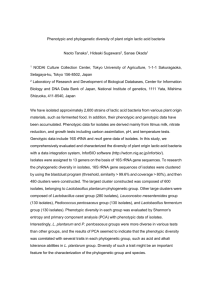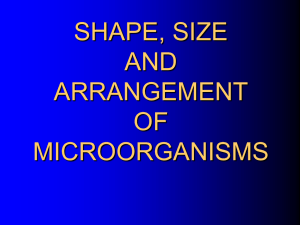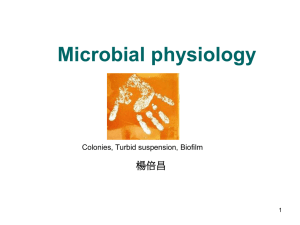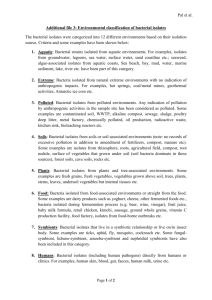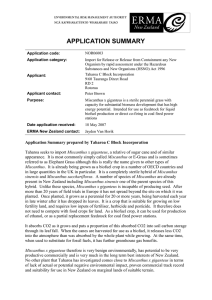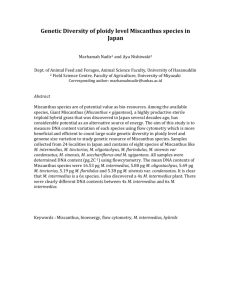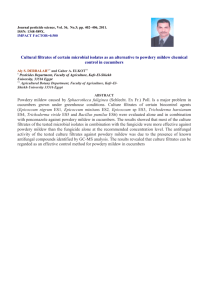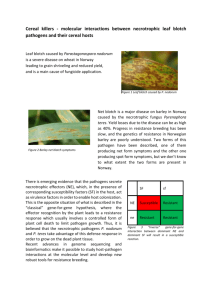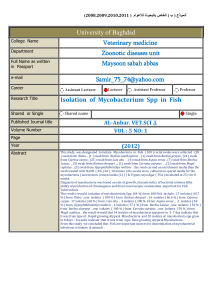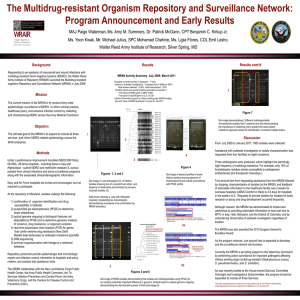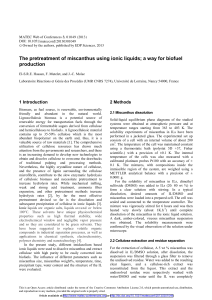Laura`s Poster
advertisement
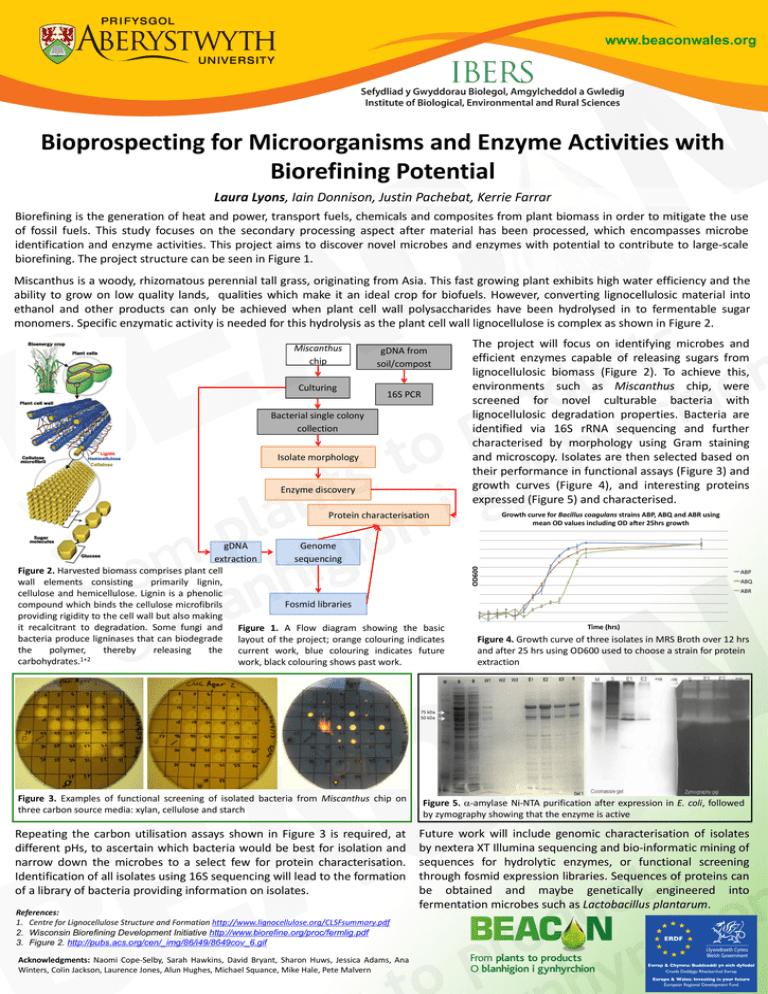
www.beaconwales.org Bioprospecting for Microorganisms and Enzyme Activities with Biorefining Potential Laura Lyons, Iain Donnison, Justin Pachebat, Kerrie Farrar Biorefining is the generation of heat and power, transport fuels, chemicals and composites from plant biomass in order to mitigate the use of fossil fuels. This study focuses on the secondary processing aspect after material has been processed, which encompasses microbe identification and enzyme activities. This project aims to discover novel microbes and enzymes with potential to contribute to large-scale biorefining. The project structure can be seen in Figure 1. Miscanthus is a woody, rhizomatous perennial tall grass, originating from Asia. This fast growing plant exhibits high water efficiency and the ability to grow on low quality lands, qualities which make it an ideal crop for biofuels. However, converting lignocellulosic material into ethanol and other products can only be achieved when plant cell wall polysaccharides have been hydrolysed in to fermentable sugar monomers. Specific enzymatic activity is needed for this hydrolysis as the plant cell wall lignocellulose is complex as shown in Figure 2. Miscanthus chip Culturing gDNA from soil/compost 16S PCR Bacterial single colony collection Isolate morphology Enzyme discovery The project will focus on identifying microbes and efficient enzymes capable of releasing sugars from lignocellulosic biomass (Figure 2). To achieve this, environments such as Miscanthus chip, were screened for novel culturable bacteria with lignocellulosic degradation properties. Bacteria are identified via 16S rRNA sequencing and further characterised by morphology using Gram staining and microscopy. Isolates are then selected based on their performance in functional assays (Figure 3) and growth curves (Figure 4), and interesting proteins expressed (Figure 5) and characterised. Protein characterisation gDNA Genome extraction sequencing Figure 2. Harvested biomass comprises plant cell wall elements consisting primarily lignin, cellulose and hemicellulose. Lignin is a phenolic Fosmid libraries compound which binds the cellulose microfibrils providing rigidity to the cell wall but also making it recalcitrant to degradation. Some fungi and Figure 1. A Flow diagram showing the basic bacteria produce ligninases that can biodegrade layout of the project; orange colouring indicates the polymer, thereby releasing the current work, blue colouring indicates future carbohydrates.1+2 work, black colouring shows past work. Figure 4. Growth curve of three isolates in MRS Broth over 12 hrs and after 25 hrs using OD600 used to choose a strain for protein extraction 75 kDa 50 kDa Figure 3. Examples of functional screening of isolated bacteria from Miscanthus chip on three carbon source media: xylan, cellulose and starch Figure 5. a-amylase Ni-NTA purification after expression in E. coli, followed by zymography showing that the enzyme is active Repeating the carbon utilisation assays shown in Figure 3 is required, at different pHs, to ascertain which bacteria would be best for isolation and narrow down the microbes to a select few for protein characterisation. Identification of all isolates using 16S sequencing will lead to the formation of a library of bacteria providing information on isolates. Future work will include genomic characterisation of isolates by nextera XT Illumina sequencing and bio-informatic mining of sequences for hydrolytic enzymes, or functional screening through fosmid expression libraries. Sequences of proteins can be obtained and maybe genetically engineered into fermentation microbes such as Lactobacillus plantarum. References: 1. Centre for Lignocellulose Structure and Formation http://www.lignocellulose.org/CLSFsummary.pdf 2. Wisconsin Biorefining Development Initiative http://www.biorefine.org/proc/fermlig.pdf 3. Figure 2. http://pubs.acs.org/cen/_img/86/i49/8649cov_6.gif Acknowledgments: Naomi Cope-Selby, Sarah Hawkins, David Bryant, Sharon Huws, Jessica Adams, Ana Winters, Colin Jackson, Laurence Jones, Alun Hughes, Michael Squance, Mike Hale, Pete Malvern




